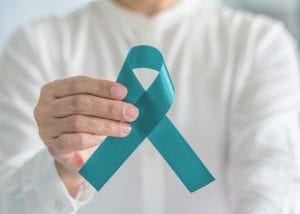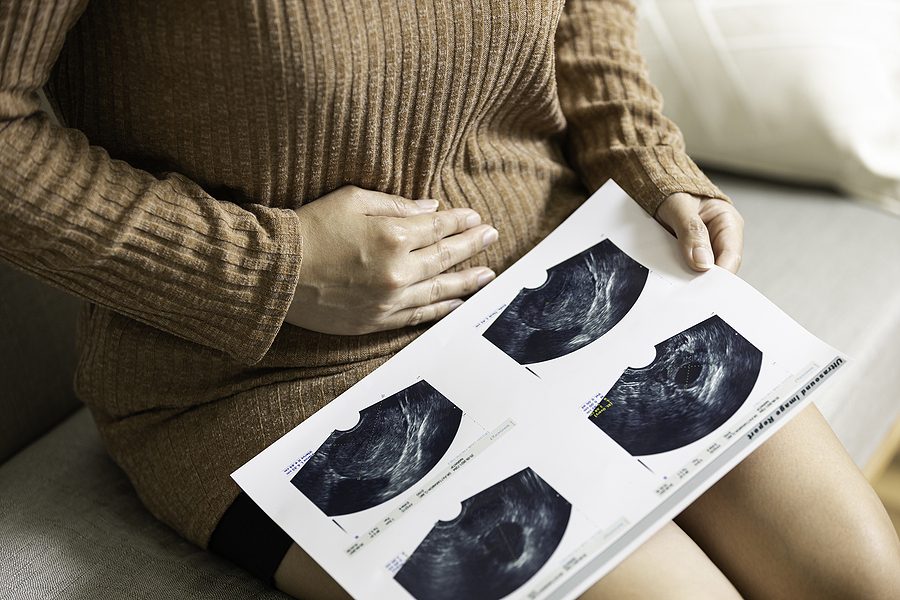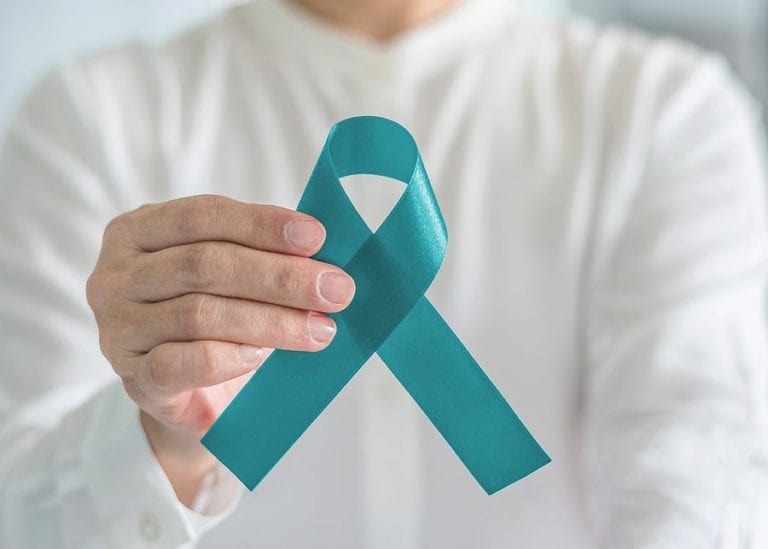9/11-Caused Ovarian Cancer and Invasive Cervical and Other Female Cancers
 The dust from 9/11 is the cause of ovarian cancer in first responders as well as the downtown residents, workers, and students, who are often eligible for lifetime coverage and treatment through the World Trade Center (WTC) Health Program and an award of compensation from the September 11th Victim Compensation Fund (VCF). The dust and fumes from the collapse of the towers also caused many rare cancers, including cancer of the vulva, vagina, and cervix uteri (invasive only). Quite significantly, uterine cancer and non-invasive cancers of the vulva, cervix, and uteri are NOT considered to be related to the 9/11 fallout and, as a result, are not covered by the WTC Health Program or the VCF.
The dust from 9/11 is the cause of ovarian cancer in first responders as well as the downtown residents, workers, and students, who are often eligible for lifetime coverage and treatment through the World Trade Center (WTC) Health Program and an award of compensation from the September 11th Victim Compensation Fund (VCF). The dust and fumes from the collapse of the towers also caused many rare cancers, including cancer of the vulva, vagina, and cervix uteri (invasive only). Quite significantly, uterine cancer and non-invasive cancers of the vulva, cervix, and uteri are NOT considered to be related to the 9/11 fallout and, as a result, are not covered by the WTC Health Program or the VCF.
As just stated, the toxic dust plume from the buildings’ collapse resulted in cancer and other serious health conditions. While the lung-related conditions suffered by first responders who worked in the area during the attack and subsequent cleanup efforts are most often considered, many other illnesses—such as ovarian cancer that resulted from the exposure—are not as frequently discussed.
If you were at Ground Zero or the surrounding Lower Manhattan area and contracted ovarian cancer or lost a loved one as a result of ovarian cancer (or a rare invasive female cancer) following exposure to World Trade Center toxins, you could receive healthcare and monitoring as well as compensation through two 9/11 victims assistance programs known as the WTC Health Program and the September 11th Victim Compensation Fund. Read on for more information.
The Function of the Ovaries
The ovaries are two almond-sized glands located on each side of the uterus in the female body. The ovaries are responsible for producing not only eggs (ova) but also the hormones: estrogen and progesterone.
The ovaries primarily contain three kinds of cells, including:
- Epithelial cells, which cover the outer surface of the ovary. This is the most common area for an ovarian tumor to occur.
- Germ cells, which are the cells that produce the ova.
- Stromal cells, which are the structural cells that hold the ovarian tissue together and produce the hormones estrogen and progesterone.
Estrogen and progesterone are essential for the sexual and reproductive development of women. These two hormones work together to regulate menstrual cycles and also play an important role in pregnancy. There are three types of estrogen hormone, with the prominent type found in the body dependent on the age of the woman.
Those three types include:
- Estradiol (E2): The most common type of estrogen to be found in women of childbearing age.
- Estrone (E1): This is the only estrogen that the body makes after menopause.
- Estriol (E3): This is the type of estrogen that is predominant during pregnancy.
In addition to promoting the healthy development of sexual characteristics in women, estrogen also controls the woman’s cholesterol levels, promotes healthy bones, controls mood, and improves skin and other tissues. Estradiol is also important in breast development and fat distribution in the thighs, hips, and legs, as well as the development of reproductive organs during puberty.
Once a female has reached puberty, her body will generally release a single egg each month from the ovaries, which is known as ovulation. If pregnancy takes place through the fertilization of that egg, estrogen and progesterone will be released in high levels to prevent other eggs from maturing.
Progesterone and estrogen are also necessary for preparing a woman’s body for menstruation, which is when the body sheds the lining it made within the uterus to support the implantation of an embryo and development of the fetus. This process is instigated by the hypothalamus, which is a small region located at the base of the brain.
Progesterone is a steroid hormone that is secreted by the corpus luteum, which is a temporary endocrine gland that a woman’s body produces after ovulation in the second half of her cycle. It prepares the mucus membrane that lines the womb (the endometrium) to thicken to accept the fertilized egg. It also prevents muscle contractions within the uterus that would cause the woman’s body to reject the fertilized egg.
If a woman does not become pregnant, the corpus luteum breaks down, which signals the start of menstruation. If the woman does conceive, progesterone continues to stimulate the body to provide blood vessels to the endometrium to nourish the fetus. Progesterone continues to be secreted in place of the corpus luteum to prevent the body from producing more eggs and to prepare the breasts for milk production.
Types of Ovarian Cancers
 Ovarian cancer, like many other types of cancer, often does not present with symptoms in the early stages.
Ovarian cancer, like many other types of cancer, often does not present with symptoms in the early stages.
However, if symptoms do appear, they can include:
- Abdominal bloating or swelling.
- Quickly feeling full when eating.
- Unintended weight loss.
- Pelvic discomfort.
- Changes in bowel habits, such as constipation.
- Frequently feeling the need to urinate.
- Fatigue.
- Pain during intercourse.
- Changes in a woman’s period, including heavier bleeding than normal or irregular bleeding.
After an ovarian cancer diagnosis, the patient’s medical team will assign a stage to the cancer, based on the size of the tumor and whether it has spread to other organs. The stages of ovarian cancer are as follows:
- Stage 1: The cancer is only found in the ovaries or fallopian tubes.
- Stage 2: The cancer is found in the ovaries or fallopian tubes and has spread to at least one other organ in the same region, such as the uterus or bladder.
- Stage 3: The cancer is in one or both ovaries or fallopian tubes and has spread to organs outside of the pelvis.
- Stage 4: The cancer has spread from the ovaries or fallopian tubes to areas such as the fluid around the lungs, the liver or spleen, or to distant lymph nodes.
The three types of cells that primarily make up ovary tissue are also responsible for producing three types of ovarian cancer, as listed below.
Epithelial Ovarian Tumors
The most common type of ovarian cancer involves the growth of cancerous cells that originate in the cells that make up the outer surface of the ovary. Malignant epithelial ovarian tumors are called carcinomas. About 80 to 90 percent of all ovarian tumors are epithelial carcinomas.
Upon diagnosis, epithelial tumors are “graded” based on how much the tumor cells look like regular tissue. Grade 1 epithelial tumors are those in which the tumor cells look the most like regular tissue. These tumors are generally the most treatable. Grade 3 epithelial tumors look less like normal tissue and feature a less positive outlook.
This tumor is also given a “type” based on how fast the cancer cells grow and how well they respond to chemotherapy. Type I tumors generally grow slowly but do not respond as well to chemotherapy. Type II tumors, while growing much faster than type I tumors, are often much more responsive to chemotherapy.
Ovarian Germ Cell Tumors
Germ cells create ova in females as well as sperm in males. Germ cell tumors in the ovary often produce symptoms such as swelling of the abdomen or vaginal bleeding after menopause. This type of cancer often affects only one ovary. While most germ cell ovarian tumors tend to be benign, some are not only malignant but life-threatening. Fewer than 2 percent of ovarian cancers are germ cell tumors, but 90 percent of sufferers will survive five years after diagnosis.
There are several types of germ cell tumors, including:
- Teratomas: This type of germ cell tumor appears as if it is developing fetal tissue that often contains non-cancerous tissue such as bones, hair, and teeth. This type of tumor is often benign, though immature teratomas are sometimes malignant and require removal by surgery.
- Dysgerminoma: Though rare, this is the most common type of germ cell cancer, and it usually does not grow very quickly. Dysgerminomas are treated by surgically removing the ovary. This treatment is effective in around 75 percent of cases without any additional treatment.
- Endodermal sinus tumors and choriocarcinoma: These rare tumors generally affect girls and young women and are very responsive to chemotherapy. Choriocarcinomas often develop in the placenta during pregnancy and this type of tumor tends to be more responsive to treatment than choriocarcinomas that develop in the ovary.
Ovarian Stromal Tumors
Only about 1 percent of all ovarian tumors are stromal tumors. About 50 percent of stromal tumors develop in women who are over the age of 50, while the other half occur in younger women. The most common symptom of this type of ovarian cancer is abnormal vaginal bleeding, which occurs because the tumor has developed in the part of the ovary tasked with producing estrogen. This can result in vaginal bleeding in a woman who is past menopause or bleeding in a young girl who has not yet reached puberty or begun to have menstrual cycles.
Occasionally, stromal tumors will cause the ovaries to make male hormones, which will cause menstrual periods to completely stop.
The most common types of malignant ovarian stromal tumors include:
- Granulosa cell tumors (the most common type).
- Granulosa-theca tumors.
- Sertoli-Leydig cell tumors, which are considered low-grade cancers that grow slowly and feature tissue that looks more like normal cells.
More than 75 percent of individuals diagnosed with ovarian stromal tumors will survive at least five years past diagnosis.
Ovarian Cysts
Ovarian cysts are small fluid-filled sacs that develop on the ovary. Ovarian cysts are quite common, and are actually a normal part of ovulation. However, a large cyst that does not go away within a few months could indicate cancer.
The WTC Health Program and VCF Can Help
The WTC Health Program and the September 11th Victim Compensation Fund (VCF) were both formed in the aftermath of 9/11 to help victims of the terrorist attack to deal with emerging health issues caused by exposure to toxins at Ground Zero and other attack sites at the Pentagon and Shanksville, Pennsylvania. The WTC Health Program provides free health care services and health monitoring in every state in the nation for those with one of the eligible conditions. Ovarian cancer was added to the list of eligible conditions in 2012 while rare cancers such as invasive cancer of the vulva, vagina, and cervix uteri were added in 2014.
To obtain services through the WTC Health Program, one must either apply on the program’s website or, to increase the odds of approval and acceptance in the Program, contact an experienced 9/11 attorney to handle the application process. The application process includes providing proof of the diagnosis of an eligible 9/11-related medical condition as well as proof of presence in Lower Manhattan from September 11, 2001, to July 31, 2002, or in one of the other 9/11 sites at the time when the attack occurred or any time during the period until July 31, 2002. Note that the WTC Health Program website contains the basic information to get started, but you must meet many other federal regulations before acceptance into the Program.
VCF provides compensation for wage loss plus an award for pain and suffering to those who were in the Exposure Zone any time between September 11, 2001, until May 30, 2002, and suffered a WTC Health Program-certified condition as a result. The fund also provides for compensation for wrongful death to the family members of individuals who died from a 9/11-related condition.
Individuals interested in filing a claim for VCF funds must first register on the program’s website. Registration must take place for those who received their diagnosis before the reauthorization of the program on July 29, 2019, by July 29, 2021. Those whose diagnosis came after that date have two years from the time of diagnosis to register. For wrongful death claims, registration must occur by July 29, 2021, if the person passed before July 29, 2019, or within two years after the date of death caused by cancer or other suspected 9/11 caused condition.
The registration is not the filing of your claim but merely a reservation of your right to file a claim at any time before October 2090. To file a claim, your diagnosis must be certified by the WTC Health Program and you must submit supporting documentation to prove your claim. In claims where the person died before his or her condition was certified by the WTC Health Program, then the VCF requires the submission of the deceased’s past medical records.
Let Hansen & Rosasco Help with Your 9/11 Assistance
 The 9/11 attorneys at Hansen & Rosasco have helped thousands of clients over many years obtain the compensation and services they deserve after suffering from cancer or other diseases as a result of the toxic environmental fallout from the terrorist attacks on September 11th. We can not only help with the application and filing of claims with these programs but can also help you determine if there are other programs that you qualify for. For a free case evaluation, contact us online or by calling (855) 353-4907.
The 9/11 attorneys at Hansen & Rosasco have helped thousands of clients over many years obtain the compensation and services they deserve after suffering from cancer or other diseases as a result of the toxic environmental fallout from the terrorist attacks on September 11th. We can not only help with the application and filing of claims with these programs but can also help you determine if there are other programs that you qualify for. For a free case evaluation, contact us online or by calling (855) 353-4907.


